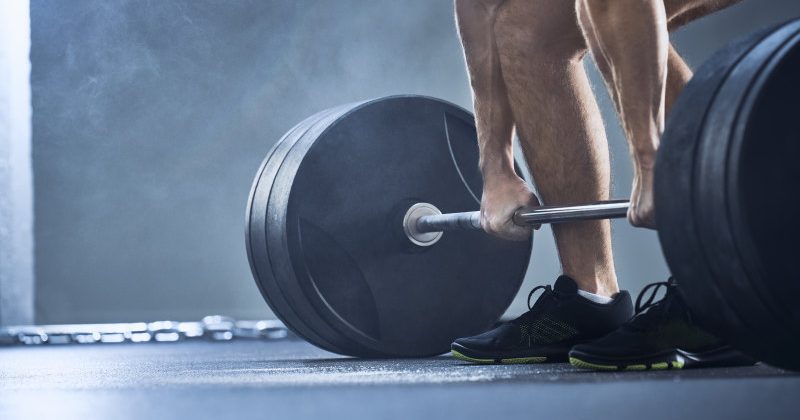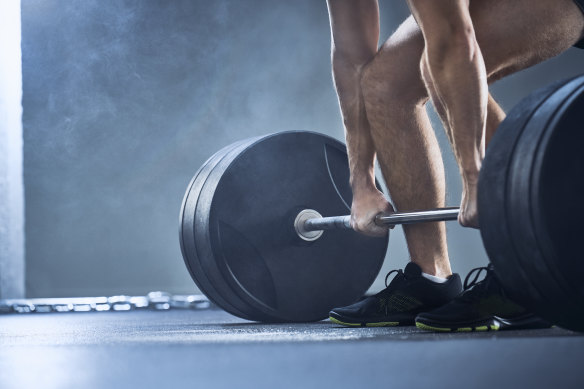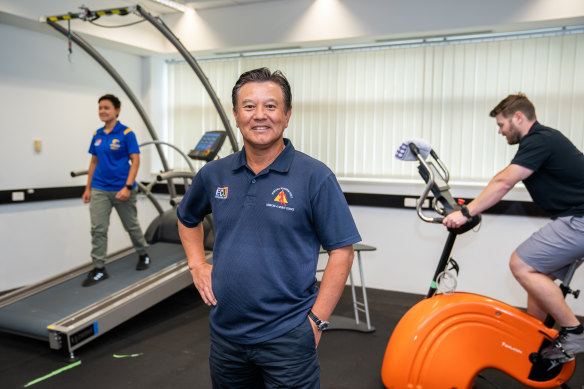Ken Nosaka wishes that, 43 years ago, he knew then what he knows now.
That was when he was a 20-year-old athlete and was told lactic acid caused the soreness he felt after training. It was also a time when the prevailing wisdom about exercise included “no pain, no gain”, “lift weights to build muscle”, and “more is more”.
Lowering is not an afterthought to lifting; it might lead to greater gains.Credit:Getty
Today, our understanding of exercise has changed dramatically.
In the last decade, researchers have revealed that short bursts of HIIT are equal or superior to long slow sessions. They have discovered that frequent exercise snacks as brief as three seconds at a time (in this case squeezing your muscle as hard as you can) can enhance strength and health. And they have shown that while some soreness is OK, the “no pain, no gain” mantra is a myth. Work smarter, not harder is now the catch cry.
Nosaka’s research emphasises this point.
When he dug deeper into exercise science he found out lactic acid was not responsible for feeling sore at all. It sparked a career researching the real culprit: Eccentric exercises or the part of exercise where we lower ourselves or weights. These include sitting down slowly on a chair or the couch, walking downstairs, and the lowering phase of a push-up, kettle bell deadlift or bicep curl.
His latest study into eccentric exercise has found that the same results can be achieved with half the reps if you lower instead of lift.
Nosaka and his team took 53 participants and divided them into four groups, with one of those groups acting as controls. Twice a week for five weeks the other groups performed either concentric-eccentric (lifting and lowering), concentric (just lifting) or eccentric (just lowering) resistance exercises.
Despite the eccentric-only group doing half as many reps as those lifting and lowering weights, their gains in strength were similar to the group that lifted and lowered. The eccentric-only group also saw a greater improvement in muscle thickness: 7.2 per cent compared to the concentric-eccentric group’s 5.4 per cent.
“Many people focus on the lifting phase – the concentric contraction,” Nosaka says, “which is not bad. But many people are wasting their opportunity to get stronger and get fitter by removing the eccentric phase.”
Ken Nosaka studied eccentric exercise.
“Lifting is important, but less important than lowering the weight. Our studies have shown that lifting does not contribute so much for muscle growth and strength gains.”
For people wanting to try it themselves, it means either using a resistance machine set up for lowering, or focusing on the lowering part when lifting weights, or when going into a squat.
Tim Olds, a professor in the School of Health Sciences at the University of South Australia, says the research is “very interesting” on several levels.
First, eccentric exercises are very efficient. “We can lower a much heavier weight than we can lift, and it requires less energy to lower the same weight than to lift it. It’s easier to walk downstairs than up them,” Olds explains.
Second, because muscles and tendons are stretched in the eccentric phase, we store elastic energy in them, and that creates energy in the up-phase: “Think about bouncing as you walk along. This increases overall efficiency — we can do more with less energy.”
Third, eccentric contractions are much more damaging to the muscle because they are being stretched under tension. “Eccentric exercise tends to cause micro-tears in the muscle, which can cause muscle soreness (bad), but also leads to rapid muscle regrowth and hypergrowth (good).”
Some soreness can show our muscles are getting good stimulus, Nosaka says, but as our muscles adapt the soreness from the same exercise disappears. And, he adds, occasional soreness is very different to experiencing pain: “We don’t need to seek pain to gain.”
When he was a student and aspiring sprinter, he didn’t know this and says there wasn’t a focus on eccentric exercise. Now, athletes use them to improve their performance and prevent injuries. Those effects extend to all of us.
In fact, even low intensity eccentric contractions can increase muscle strength and muscle mass.
That means sitting on the couch may be better exercise than you think – so long as you do it regularly. “Just a sitting on the couch very slowly is good exercise,” Nosaka says. “Then if you need more challenge you can sit down with one leg.”
If we do this once every 30 to 60 minutes, whenever we go to the toilet or sit on a chair, we break up the continual sitting that wreaks havoc on our health, and we work out our muscles.
It’s not to say that the current recommendation of 150 minutes of moderate exercise a week and two strength sessions is wrong. “But 80 per cent of people don’t do that,” says Nosaka. “That’s shocking.
“So my idea is to show this is a minimal exercise, and you can still get some benefit. Then you can develop more exercises from there.”
From the slow sit, we might add a daily three-second muscle squeeze, which Nosaka’s previous research has found can improve strength by up to 12 per cent. We might dot our day with 20 second spurts of walking quickly upstairs or running to the bus stop to get our heart-rate up. And we might try to move more in general to increase our step count and improve our overall health.
We now know every step, and every sit, counts so people who are sedentary and struggling to meet the guidelines can still make a meaningful difference to their health as can those of us who are “active couch potatoes” and who work out but are stuck for most of the day at our desks.
Nosaka likens the accumulation of each bit of movement in our day to collecting coins.
“If we just accumulate 5 cents each day, then eventually within a year we have a large amount of money. Doing small amounts of exercise each day accumulates too and can change your body.”
Make the most of your health, relationships, fitness and nutrition with our Live Well newsletter. Get it in your inbox every Monday.
Most Viewed in Lifestyle
From our partners
Source: Read Full Article


